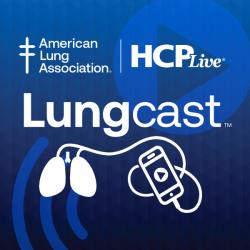
OR WAIT null SECS
Study Reviews Data on Anti-IL-5/Anti-IL-5R Treatment of Severe Eosinophilic Asthma
This review compares the clinical and real-world outcomes of drugs such as mepolizumab versus drugs such as benralizumab for severe eosinophilic asthma.
There is no direct evidence on underlying mechanisms or eosinophil reductions that reflects a notable difference in clinical efficacy between benralizumab and mepolizumab for severe eosinophilic asthma, according to recent findings, though head-to-head research may be necessary to fully compare their clinical profiles.1
Despite these data, benralizumab did demonstrate certain meaningful attributes versus mepolizumab. These findings and others resulted from a review of anti-interleukin (IL)-5 and anti-IL-5R treatments, authored in part by David J. Jackson from Guy's Severe Asthma Centre at Guy's Hospital King's College London in the UK.
Mepolizumab and reslizumab were noted by Jackson’s team as 2 monoclonal antibodies which target the ligand IL-5, preventing eosinophil interaction. Benralizumab, on the other hand, binds to the IL-5 receptor (IL-5R) and consequently prevents the receptor from binding. Benralizumab is known to result in far greater eosinophil reduction.
“Thus, drugs targeting IL-5 receptors provide an alternative method for depleting eosinophils as they are effective regardless of the cytokine network involved,” Jackson and colleagues wrote. “This article compares these two approaches, including clinical outcomes.”1
Review and Notable Findings
The investigators highlighted that eosinophilic inflammation had been previously shown to adversely impact dendritic cell interferon-alpha responses, known to be critical in fighting rhinovirus respiratory infections.2 To address such issues, several biological therapies, including reslizumab, benralizumab, mepolizumab, dupilumab, omalizumab, and tezepelumab, have been developed to reduce eosinophils in the blood and airways.
Mepolizumab and reslizumab are designed as monoclonal antibodies which can specifically target IL-5, thus preventing its interaction with the IL-5 receptor (IL-5R) located on eosinophils and basophils. Given the medications’ high specificity for IL-5, they are not shown to interfere with the actions of other cytokines, maintaining the balance of the broader immune response.
Benralizumab, on the other hand, is designed as a humanized monoclonal antibody which will bind to the alpha subunit of IL-5R (IL-5Rα) on eosinophils as well as basophils. Unlike mepolizumab therapy, benralizumab depletes eosinophils independently of cytokine pathways.
Given such a difference, benralizumab has shown a greater reduction in blood and airway eosinophils within prior clinical research highlighted by the investigators, compared to mepolizumab. However, such findings result from separate studies, and there is a lack of direct head-to-head comparisons between the 2 medications apart from a single trial in eosinophilic granulomatosis with polyangiitis.
In studies noted by the research team such as SIROCCO, it was reported that benralizumab led to near-complete blood eosinophil depletion in most subjects, thus diminishing eosinophil counts to a median of 0 cells/μL by the 4-week mark. Such results were continually maintained throughout the 48-week study, regardless of dosing frequency.
Despite the fact that both benralizumab and mepolizumab are shown to target eosinophils through different underlying mechanisms, the 2 drugs have comparable safety findings. Mepolizumab selectively blocks IL-5 and does not disrupt the broader cytokine network, while benralizumab targets IL-5R, inhibiting all pathways to eosinophil activation.
Although such distinctions were highlighted by the investigators, they added that there is no direct evidence to indicate that benralizumab’s greater eosinophil reduction indicates superior clinical efficacy. Both options for treatment have led to high levels of efficacy in terms of treating severe eosinophilic asthma in various clinical and real-world studies.
“Yet recent real-world data does suggest ongoing eosinophilic inflammation in some patients despite anti-IL-5 treatment is nevertheless clinically significant,” they wrote. “...Furthermore, a comparison of health care costs in the US showed that benralizumab had a lower total biologic cost per patient with severe eosinophilic asthma than mepolizumab over 4 years ($23,061 lower for benralizumab vs. mepolizumab), with greater cost savings with benralizumab (vs. mepolizumab) due to reductions in exacerbations (including hospitalisations) and OGC-dependent years.”1
References
- Jackson DJ, Wechsler ME, Brusselle G, Buhl R. Targeting the IL-5 pathway in eosinophilic asthma: A comparison of anti-IL-5 versus anti-IL-5 receptor agents. Allergy. 2024; 00: 1-10. doi:10.1111/all.16346.
- Dill-McFarland KA, Schwartz JT, Zhao H, et al. Eosinophil-mediated suppression and anti-IL-5 enhancement of plasmacytoid dendritic cell interferon responses in asthma. J Allergy Clin Immunol. 2022; 150(3): 666-675. doi:10.1016/j.jaci.2022.03.025.


